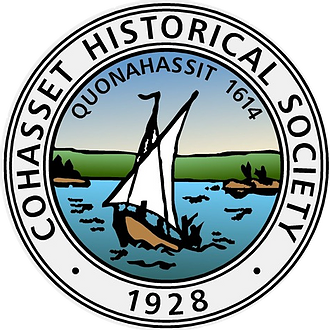The Vanderbilt Costume Ball
On March 26, 1883, a lavish ball was thrown at a newly constructed Vanderbilt home on Fifth Avenue in New York City.
The William K. Vanderbilt House, or “Petit Chateau,” H.N. Tiemann & Co. 1898. 5th Avenue north from 52nd Street. Museum of the City of New York. (X2010.11.4755)
The Vanderbilts were one of the numerous “new money” families who had recently made their fortunes in the rapidly industrializing United States. Cornelius “the Commodore” Vanderbilt (1794-1877) built his wealth in the railroad and shipping industries and is considered one of the richest men in American history. By the time of his death at age 82, his estate was worth over $105 million (nearly $3 billion today).
Cornelius “the Commodore” Vanderbilt (1794-1877)
The Breakers, Newport, Rhode Island. Designed by architect Richard Morris Hunt in 1893-95.
The Commodore’s descendants continued to prosper throughout the late 19th century. His favorite grandson, Cornelius Vanderbilt II, inherited the many railroad companies owned by the family upon the death of his father, William Henry Vanderbilt. Cornelius and his wife Alice Claypoole built the famous 70-room summer “cottage” The Breakers in Newport, Rhode Island. The family sold the house and grounds to The Preservation Society of Newport County in 1972, and the building became a National Historic Landmark, which you can still visit today.
William Kissam Vanderbilt, brother of Cornelius II, was also a prolific builder. His summer home, Marble House, constructed in Newport just a few years earlier, was just down the street from where his brother would build a much grander home just a few years later. Continuing the informal tradition begun by his father and passed down to his siblings, William had a large mansion built on 5th Avenue. William’s wife, Alva Erskine Smith, worked with the renowned architect, Richard Morris Hunt, to create the French Châteauesque-style home called “Petit Chateau,” which was completed in 1882.
To celebrate her new home and to gain entry into New York's high society, Alva threw a costume ball that would go down in history. Though she had more money than most of the “old money” families, the Vanderbilts, like other nouveau riche, were not seen as sophisticated as those with generational wealth. And they were not among Caroline Schermerhorn Astor's (or Mrs. Astor as she preferred) list of "the 400" members who made up New York's high society.
Alva Vanderbilt
Mrs. William Astor (Caroline Webster Schermerhorn) by Carolus-Duran, ca. 1890. Metropolitan Museum of Art (49.4).
The Vanderbilts spared no expense. The entire ball cost the couple roughly $250,000 (approximately $7.3 million dollars today). These expenses reportedly included $65,000 for champagne, $11,000 for flowers, and a staggering $156,000 for the costumes.
The press was invited to preview the Vanderbilt’s home and decor and were invited to report from inside the ballroom on the night of the event. The morning following the masquerade, The New York Times reported that more than 1,000 people attended, and on-lookers lined 5th Avenue hours before the first arrivals to glimpse the glamourous guests. A squad of police officers was even deployed to the home to contain the crowds and to direct the hundreds of carriages convening to deliver their owners.
The costumes debuted at the ball are legendary. Thanks to Alva’s smart idea of having a photographer’s studio set up in her home on the night of the ball, many photos of guests in costumes have survived.
One of the most astounding costumes of the night was worn by Alva’s sister-in-law Alice Claypoole Vanderbilt, wife of Cornelius Vanderbilt II. Her “Electric Light” costume was outfitted with a hand-held torch that lit up due to a built-in battery and was designed by the leading couturier of the day Charles Frederick Worth. The dress has survived and is held in the collection of the Museum of the City of New York.
The party lasted until at least 4 o’clock in the morning and was a resounding success. Alva Vanderbilt was admitted to the 400 at last.
This essay was researched and written by Nicole Dee-Collins, Cohasset Historical Society Research Assistant
Sources
Broyles, Susannah. “Vanderbilt Ball.” Museum of the City of New York, August 6, 2013. https://www.mcny.org/story/vanderbilt-ball.
The New York Times. “ALL SOCIETY IN COSTUME; MRS. W.K. VANDERBILT’S GREAT FANCY DRESS BALL.” March 27, 1883. TimesMachine. https://www.nytimes.com/1883/03/27/archives/all-society-in-costume-mrs-wk-vanderbilts-great-fancy-dress-ball.html?smid=url-share.
Women & The American Story. “Vanderbilt Costume Ball.” New York Historical Society Museum & Library, n.d. https://wams.nyhistory.org/industry-and-empire/labor-and-industry/vanderbilt-costume-ball/.













